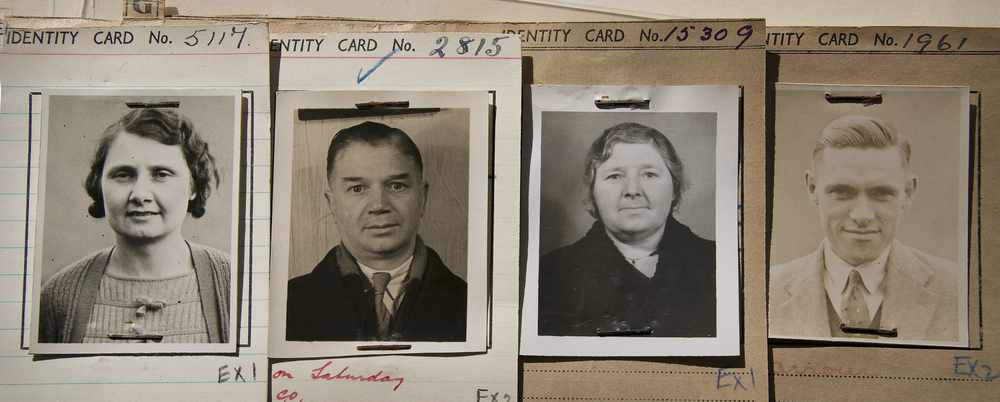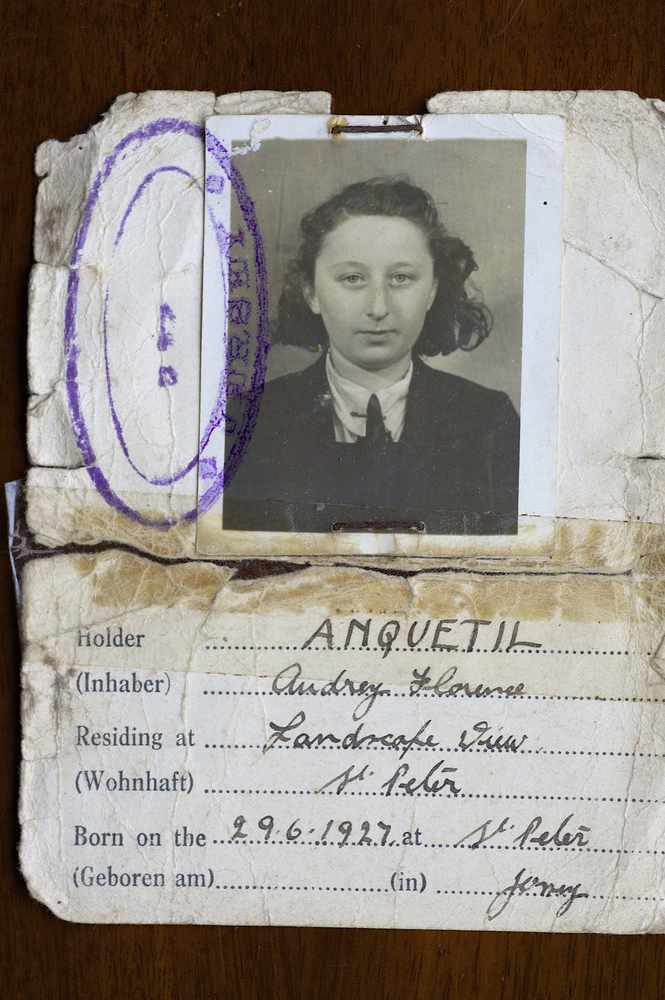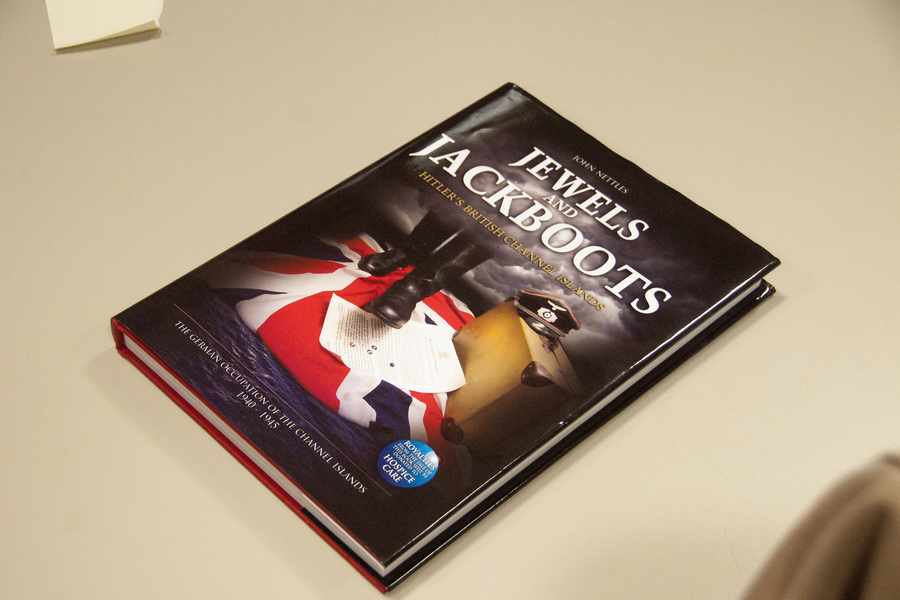The film, entitled Another Mother’s Son, stars Judge John Deed actress Jenny Seagrove and former Boyzone singer-turned-actor Ronan Keating.
Produced by Bill Kenwright Films, it will tell the story of Jersey resident Louisa Gould who, along with her brother Harold Le Druillenec, were betrayed by their neighbours and were arrested in 1944 for harbouring escaped Russian worker Feodor Buryi.
Louisa Gould died in a gas chamber in the German concentration camp Ravensbrück in February 1945.

Her brother became the only known British survivor of the Bergen-Belsen camp and later returned to Jersey to become a teacher.
The film has been written by Mrs Gould’s great-niece, Jenny Lecoat, who grew up in the Island.
The title of the film is based on the fact that Mrs Gould took in Feodor after her own son died during the war, as she did not want to see another mother suffer in the way that she had.

As the film progresses, it becomes clear that the British Prime Minister, Winston Churchill, would not attempt to regain the Island and Jersey begins to succumb to the pressures of the Occupation, with Islanders beginning to turn on each other.
Filming is due to take place over six weeks, with the cast and crew on set next week at Berrow Beach.
The film team looked at shooting the movie in the Island, but decided that Somerset was logistically and financially a better location.
Producer Daniel-Konrad Cooper, said: ‘We needed to find a secluded village in which to house our core story, and searched a range of locations across the country to find appropriate stone as well as achieving the period look.
‘Another Mother’s Son features sequences in a harbour, on steam ships, steam trains, in a quarry and a concentration camp.
‘We looked for all those elements in Jersey, but found that the vast majority of period materials would have needed to be imported.’
Listen to Harold Le Drouillenec here
Another Mother’s Son stars Ms Seagrove as Louisa Gold with Mr Keating playing the role of Harold Le Drouillenec.
Mr Keating recently received positive reviews for his performance as Guy in the West End stage production of Once.
Jenny Seagrove is an English actress
She trained at the Bristol Old Vic Theatre School
She now plays the character of Jo Mills in the long-running BBC series Judge John Deed
The cast also includes John Hannah, known for his roles in Four Weddings and a Funeral and The Mummy franchise, as well as Sherlock and Mr Selfridge actress Amanda Abbington, and Emmy-award winning Susan Hampshire.
The film will be directed by BAFTA-winning Chris Menaul.
Mr Kenwright said: ‘Another Mother’s Son is a powerful story that celebrates the bravery of one woman, determined to protect a young man’s life against the context of the Nazi Occupation of Jersey.
‘We are thrilled to have such an accomplished and diverse cast coming together to tell Louisa Gould’s story for the first time on film.’
Mr Kenwright is a leading West End theatre producer and film producer as well as being chairman of Everton Football Club.


In The German Occupation of Jersey, Occupation diarist Leslie Sinel recorded for 2 July 1940: ‘The white flags of surrender can now be pulled down, but the swastika flies over Fort Regent!
‘The Germans appear anxious to maintain the social life of the Island, and have issued late passes to persons working at dance halls, etc.
‘One man was stopped by a zealous German patrol and promptly arrested when the name on his pass was read as ‘Churchill’!

In his memoirs, Alexander Coutanche, recalled the surrender.
At home, on the evening of 1 July, he received a surprise visit from the Island’s first commandant, Captain Gussek, and his retinue who were anxious to complete their paperwork.
Having changed into scruffy gardening clothes, including trousers torn at one knee, the Bailiff’s attire did not impress the Germans gathered in his drawing room.
‘It was made clear to me who was in charge of the whole operation when he introduced himself to me as Captain Gussek.
‘His method of expressing some surprise at my appearance was to put a monocle into his right eye, the better to take me in in those days.
‘I used on occasion to wear a monocle myself and it so happened that it was in the pocket of my jacket now I was able to repay the compliment and I did so.
‘We took good stock of each other’.

Pam Tanguy has a vivid memory of the bombing of La Rocque Harbour, even though she was only four; as she says being shot at is something you never forget.
Mrs Tanguy recalls being in a field (now an estate of houses) close to the harbour on a very hot Sunday evening, where her parents were working.
Just as she was about to open the packet of salt that came in a bag of crisps there was a big explosion.
‘Three big shapes came trailing along, Heinkel bombers they were, and they started firing at us and my father said “get down, get down”!’ she said.
‘We were lying flat in the rows of tomatoes until they flew away.’
They rushed home to the seaside cottage where she lives today and she and her mother hid in the cupboard under the stairs.
Her father went to La Rocque where he discovered the bodies of three men who had died from shrapnel wounds.


In 2012, the JEP reviewed John Nettles new book about the Occupation, Jewels and Jackboots:
EVER since John Nettles helped bring Jersey into the homes of millions during his stint as DS Jim Bergerac, the Island has held him in great affection.
That fondness is reciprocated and gave him an important feeling for the community which informed the way he approached his work.
However, Mr Nettles, a university history scholar, embarked on his research and the writing of the book with great emphasis on providing an objective account of the Channel Islands Occupation experience.
As a result, Jewels Jackboots paints a very fair picture which does not shy away from some of the more difficult aspects of those five awful years.
In a chapter entitled Precious Little Resistance, the author looks at the lack of armed resistance in the Island.
‘Was there not a small army of men and women ready and willing to lay down their lives in the cause of freedom from the Nazi yoke?’ he asks, before going on to explain that the conditions necessary to allow such a movement, not least a place of refuge where fighters could hide out, were absent in Jersey and the other islands.
Instead, the islands’ leaders presided over a cautious balancing act based on an understanding that they would co-operate if the Germans visited no violence on the civilian population.
Mr Nettles praises the diplomacy of those leaders and the service they did for their islands. The chapter gives many personal accounts of Occupation life and concludes that this was necessary and reasonable co-operation, not collaboration.
Mr Nettles has a special interest in the treatment of the Jews in Jersey and devotes a chapter to the subject.
He concludes that the islands’ authorities governed with little or no regard to the interests of the Jews, whose plight in Europe he says they must have known.
‘They didn’t even try,’ he writes. ‘Indeed the opposite appears to be the case, for by registering anti-Jewish measures in the Royal Courts without demur and by helping to implement those measures, the Jews were actually deprived of any interests or rights of citizenship at all.
The Island government actively helped and connived in a process designed to reduce them to non-persons with no legitimate interests of any kind.’
Jewels and Jackboots combines an authoritative narrative with personal accounts and pictures which bring the story alive. Those pictures often lack captions which would
make the book a more enjoyable thing to read and flick through, and there are points where the author has assumed the reader will know the context and importance of documents without explanation.
There is, however, a very useful timeline at the start of the book which helps the reader quickly place individual incidents within a broader context.
It is a coffee-table style book with academic credibility. Many, many months of research, both interviews with those who lived through the Occupation and through the study of written archive material, have been condensed into a history which is an important addition to the literature on one of the darkest periods of Jersey’s past.
It manages to tell two stories – that of the clash of countries and ideologies alongside that of the experience of ordinary people trying to get on with life amid the tumult.






